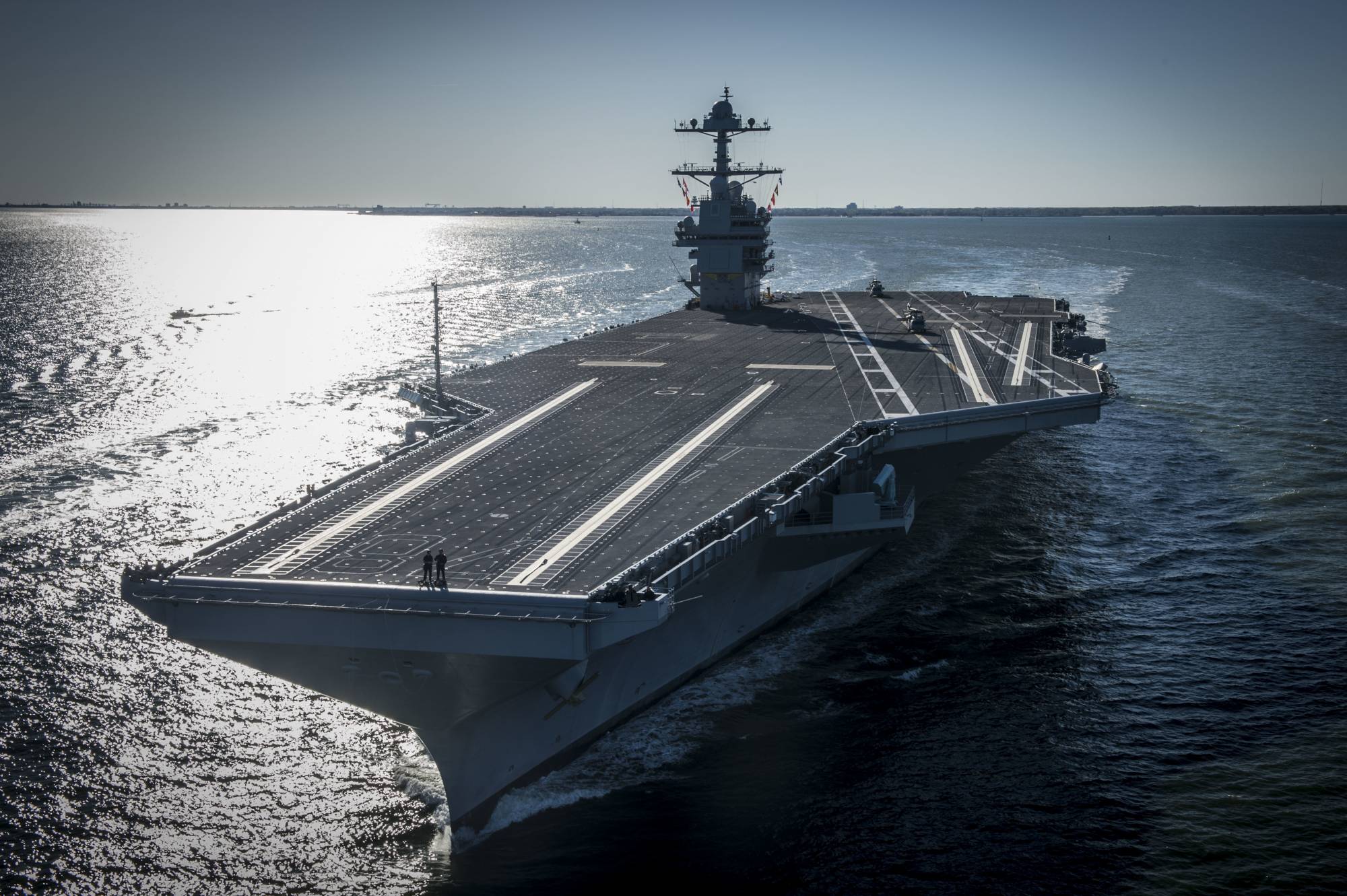Terrible images of war emerged on a new front. The United States has pledged help.
If nothing else, the new outbreak will test at least parts of an already strained defense industrial base. So let’s hear it for the unseen acquisition and logistics people already toiling around the clock to support U.S. foreign policy objectives.
The U.S.S. Gerald Ford, together with its group, arrived at the eastern end of the Mediterranean earlier this week. Hearing the news that the Defense Department would be deploying here to patrol over there, I thought, “That’s my ship!”
No, I’m not a Navy veteran. But a couple of years ago I participated in a press “embark” to the Ford. It was circling the waters just 50 miles or so off the coast of Virginia, still undergoing testing. Since then it’s graduated to the operational fleet and could be called to do who knows what as the ghastly events in Israel continue.
Stepping off the rickety, windowless airplane onto the deck of the Ford − following my first but I hope not my last tailhook landing − I still recall blinking at the gray metal horizon against, on that day at least, a clear blue sky. Looking around at the 4.5 acres of the top deck, I remember thinking, “Only a rich nation can afford a ship like this!” Navy people refer to carrier decks as “acres of national sovereignty,” and indeed they are.
The $12 billion or so in direct construction costs represent a small fraction of the lifecycle costs of the ship, to say nothing of the maybe hundreds of thousands of sailors who will serve aboard the Ford for its 40 or 50-year lifespan.
That’s just one carrier. The Navy hopes to build 10 more of them.
Impressive as they are, though, such ships and the way they project U.S. power also represent what Lincoln called “the last, best hope of earth.” Disheveled as foreign policy and execution often look, in my mind the United States remains the last, best hope of earth.
As the small press group was led on a tour through sections of the Ford, I became more aware of the immense complexity of the ship, and of the engineering and metalworking skill it represents. More impressive was that of crew members who know exactly what to do, whether preparing 3,000 steak dinners, choreographing the safe takeoffs and landings of F-18s, or operating the data center deep within the ship.
Two basic sources make all this possible. The defense industrial base of commercial companies who supply the Defense Department, and the department’s in-house manufacturing capabilities, known as the organic industrial base. Those are both strained by the commitments to keep Ukraine supplied. Unknown at this point is what the U.S. will supply to Israel.
Wandering the aisles of the Association of the U.S. Army conference earlier this week, I stopped by the booth of a manufacturer of 155mm howitzer shells. Much smaller than an aircraft carrier, this basic ground warfare commodity has been in short supply. Ukraine has fired untold thousands of them. Shells are made by contractors and by the organic industrial base.
At the booth, I lifted the end of one of the shells, to get a sense of the weight. Those shells didn’t contain the energetic materials that makes them go and explode, but they seemed to weigh close to 50 pounds as they were. (As an aside, I also hefted a copy of the Army’s new 6.8 mm combat rifle. This confirmed why combat, alas, must be conducted by the young. “Light” is a relative term.)
Israel, like many nations, uses 155mm shells. Defense News reported that in August it ordered tens of thousands of the shells from an in-country contractor after the U.S. shipped 300,000 of them out of Israel to Ukraine. So expect more industrial base strain for this crucial item.
Numerous reports from organizations including the Government Accountability Office, the Office of the Chief of Naval Operations, and several think tanks have warned of risks to the industrial base. Air Force logistician John Barrett summarized the issue in a War on the Rocks piece in August.
But people are asking, as the U.S. helps sustain two other countries’ wars, could the U.S. defense industrial base hold up the United States if push came to shove?
Nearly Useless Factoid
By Michele Sandiford
On a Navy ship, there are no windows, walls, or bathrooms; there are bulkheads, portholes and the head.
Source: uso.org
Copyright
© 2024 Federal News Network. All rights reserved. This website is not intended for users located within the European Economic Area.
